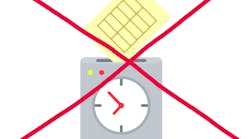Document, document, document!
By Laci L. Phillips
In August we reviewed a few of the reports every office should be running (click here to read the article). This month we will talk about documentation. For some of you, this is an ugly word. For others it has multiple definitions. No matter what your job in the office, the word documentation is part of your job description. It affects all of us.
Sticking with our theme from the last two months, we’ll start with our practice management software. There are typically four to six modules in every practice management software program. Modules are an electronic appointment book or scheduler, a family file or patient account, a ledger, the clinical chart, or the reports or manager module. In each of these modules there is a place to document or put notes. The key questions are what am I documenting and where.
The following highlight each module and note areas:
The appointment book or scheduler
• Note/tickler
• Appointment notes
• List notes
The family file or patient account
• Personal notes/family notes
• Insurance policy notes
The ledger
• Guarantor notes
• Billing statement notes
• Claim notes/remarks
The clinical chart
• Procedure/progress notes
• Clinical notes
• Treatment plan notes/disclaimers
• Consents
• Exams (new patient, comprehensive, TMJ, perio)
Most of us are probably aware of these areas, but let’s focus on documentation that we don’t get enough continuing education on.
Employment compliance and human resource manuals
I am writing this from my first HR/employment compliance course. Holy canoli! Have I missed the boat on this entire section of the dental office? Have you? Are you aware of federal, state, and local employment compliance laws? If you can say, “I’m an at-will employer,” these laws apply to you. Are you documenting employee behavior, both positive and negative? Are you performing regular and detailed performance reviews? Do you have policies and procedures clearly defined in a manual for any employee to review at any given time? If you answered no to even one of these questions, you are at risk of not having adequate burden of proof in the event of a discrimination charge, which are now more prevalent than malpractice suits.
I always thought if we had an HR manual we were set. This is not the case. The manuals have to be updated regularly with new laws and policies. It seems quite complicated at first. Roughly 117 policies should be in a manual. It gets better. There are only about 18 that have to be customized for your office. Whew! This is still a project, but one that is well worth the investment to make sure you’re covered. The part I love the most is when an employee asks, “How does our office deal with this?” and you get to say the best words of all — “Go look in the HR manual.” It works every time!
I know in real estate it’s location, location, location, but in our industry it’s document, document, document. Make it easy, use your practice management software to its fullest to document patient information, AND use your manual for employment compliance.
Laci L. Phillips is the senior practice management consultant and a professional public speaker with Banta Consulting, Inc. of Grain Valley, Mo., as well as the Director of Partnering Sponsors with SCN. While going to college in southern New Mexico to pursue a life of communications, Laci was introduced to her first job in the dental industry as a chairside assistant 18 years ago. Her experience in the dental office as a chairside assistant up through the ranks as an office administrator enable Laci to connect with her audience and her clients. As a team and software trainer and a team builder, Laci has an effective way of teaching the entire team how to move in the same direction, while working as an individual. Through Banta Consulting, Laci provides her expertise to dental practices, both large and small, across the country and internationally. Laci lives in New Mexico with her husband and two children, and can be reached by e-mail at [email protected].

